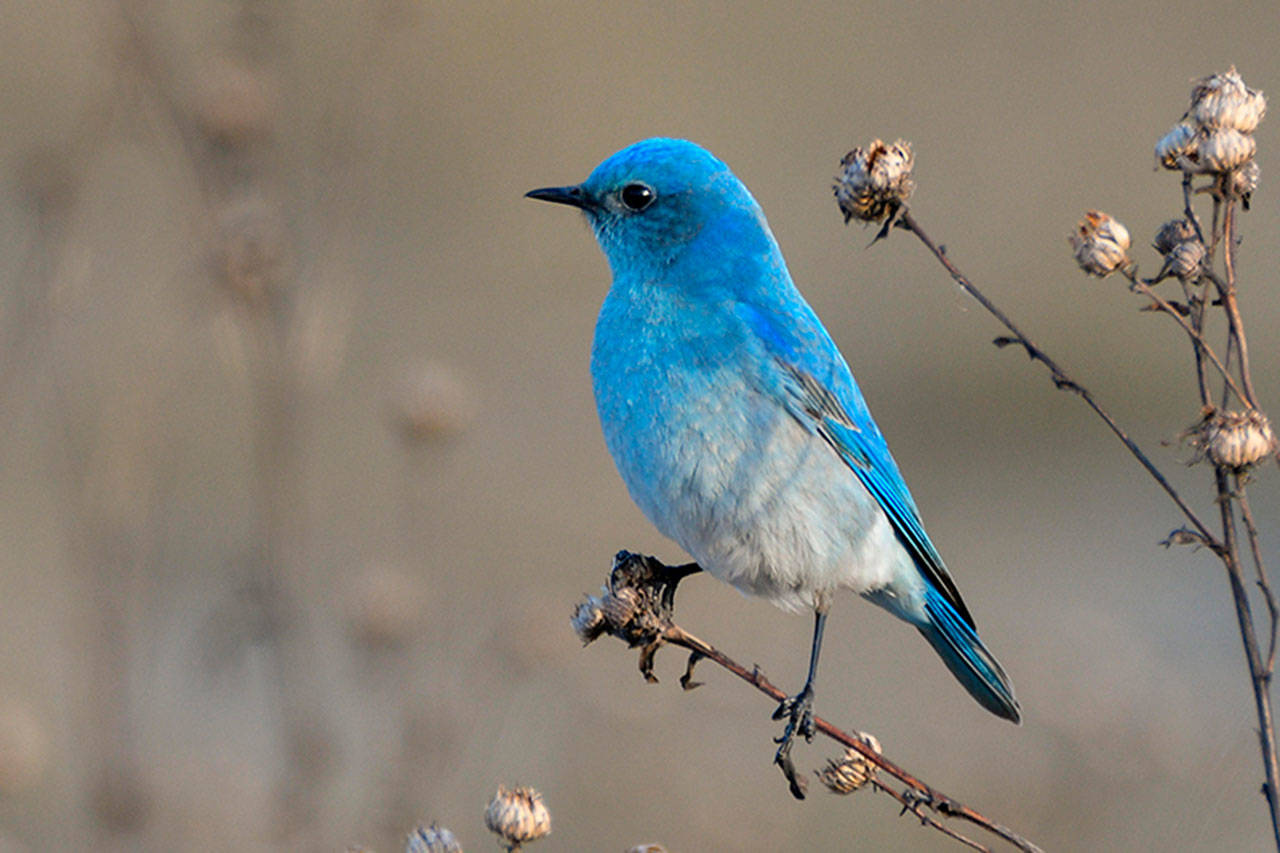The Western Bluebird seems to be making a comeback in the Olympic Peninsula and the Olympic Peninsula Audubon Society (OPAS) is helping it along.
The Bluebird Species began to decline around the turn of the century and was nearly wiped out during the first decades of the 20th century. The decline was due to a number of factors, introduction of more aggressive cavity nesters like the house sparrow and European starling, row-crop conversion of grassland, deforestation and removal of snags used for nesting.
Increased pesticide use added to the problem by killing insects, necessary food for survival.
Landowners first came to the rescue of the Bluebird by building nest boxes and placing them in their yards and open fence posts. Later in the 60’s the popularity of Bluebird trails began to take hold. The trails were so successful throughout the eastern half of the country that today the Eastern Bluebird is plentiful.
Trails have also been introduced in the southwest much to the Western Bluebird benefit but in the Northwest, the Mountain and Western Bluebird are still threatened.
Only the Western Bluebird nests in Western Washington although there is evidence that the Mountain Bluebird was common at one time. The beautiful Mountain Bluebird continues to migrate through and most recently has been sighted at 3 Crabs in the Dungeness Valley.
The Western Bluebird is a charismatic bird. It sparkles ultramarine blue feathers. It is a member of the Thrush family and like it’s cousin the Robin, it also sports a rustic chest. Because these birds are secondary cavity nesters they thrive in clear cuts where snags are plentiful, open forests and open grass fields bordered by trees and water.
They are insect eaters. In fact, insects constitute 85 percent of the Western Bluebird’s diet — which they catch on the fly. Insects are also the primary food of their young. One of their favorite foods is beetle larvae, commonly available for purchase as mealworms.
Both male and female search for nest sites together. They may choose snags, decayed fence posts, abandoned woodpecker holes or nest boxes. For the past five years OPAS has helped the species thrive by building and installing nest-boxes throughout the area. Recently 14 nest-boxes were installed, some on private property and some on public land with permission from the Department of Natural Resources.
Western Bluebirds are not migratory but they do leave their breeding grounds and move to lower elevations where they forage on fruits during the winter months. They tend to return to the same breeding ground, the same nest site and once established in an area may seem to be residential.
The female does most of the nest building. She gathers grass, straw and other plant fibers to construct and line the nest. She may take 2 weeks to build the first nest of the season. The pair begin looking for sites in March.
Generally, two broods occur each year, and on occasion three. A brood may contain four to seven eggs. Both parents care for the nestlings, in fact the male plays an important role in raising the young. Once fledged, the female begins building the second nest leaving the male primary parenting responsibility. Siblings also help in the care.
Since 2018, the OPAS Bluebird program has been a part of the National Audubon Climate Watch Program in which the Bluebird species is one of the target bird. Twice yearly, volunteers collect data to learn where Bluebirds winter and nest. The next survey period is May 15-June 15.
Climate Watch was created as a means of testing a National Audubon study of 604 North American bird species. The purpose of the study was to see the effect of climate change on birds. Data was gathered from 140 million bird records. This resulted in a 2019 report “Survival By Degrees” that concluded two-thirds of North American bird species (389 out of 604) are vulnerable to extinction as ranges contract with global warming.
For more information about Audubon’s “Survival by Degrees,” visit audubon.org.
For more about the OPAS Bluebird Watch, visit the olympicpeninsulaaudubon.org/community-science-projects.
Joyce Volmut is co-chair of the Olympic Peninsula Audubon Society’s Conservation Committee.



